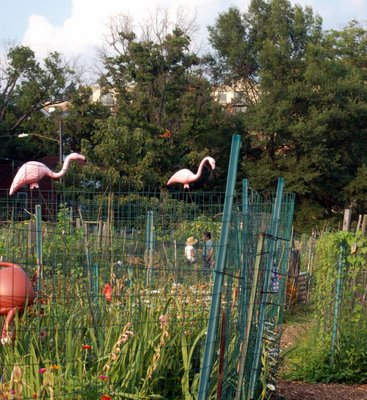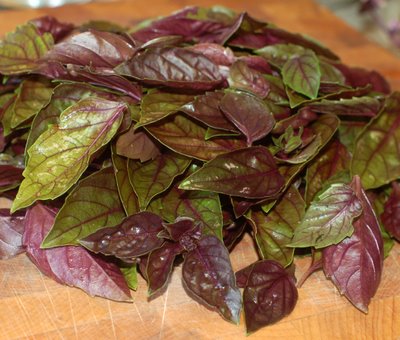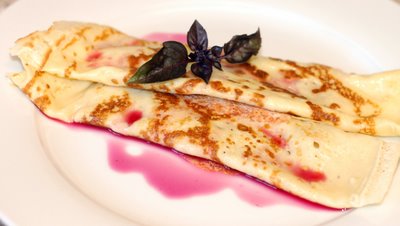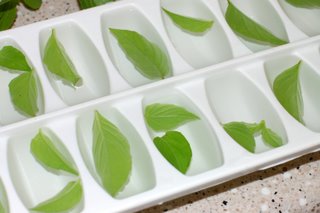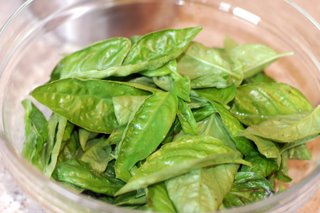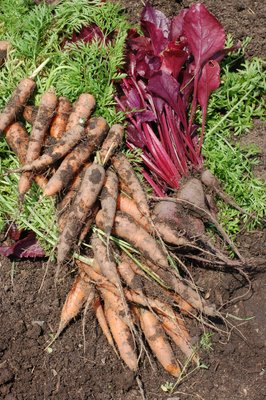Super-Easy, All-in-One-Pot, Pesto Dish

We're starting to reach that point in the summer when the garden produces more basil than we can keep up with. But that's not necessarily a bad thing. It simply means we've got plenty of raw material for making my favorite new pesto dish -- and more.
This is the latest batch of sweet basil that we picked and set in glasses of water on our kitchen counter. This seems to be the best way to keep basil fresh for a few days, rather than keeping it in the refrigerator. I've found that basil will do well like this for up to a week, after which the stems start to produce roots. (At that point, you could plant the stems back in the garden if the leaves haven't all been cut off. This could be a quicker way to produce more basil plants, rather than starting from seed.)
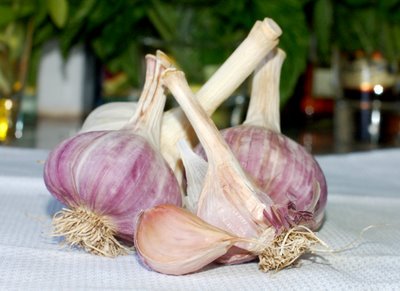
So back to my new favorite pesto dish. It's called Linguine al Pesto Genovese, a recipe that my wonderful husband discovered in The Silver Spoon cookbook. If you're at all a fan of good Italian food, I highly recommend this book. There has not been a single recipe in there that has disappointed us. Many of the recipes are of the keep-it-simple variety, calling for a few basic, good-quality ingredients.
This recipe essentially has three steps to it: 1) Make pesto. 2) Cook pasta, potatoes, and green beans together in one pot. 3) Mix everything together and eat. It's so simple!
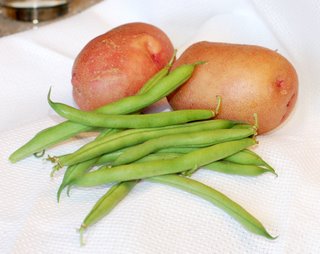
We used our own garlic for this dish. We also added a few wax beans I grew in the garden, along with green beans and red potatoes that we picked up at the farmers' market on Sunday.
~~~~~~~~~~~~~~~~~~~~~~
Linguine al Pesto Genovese, from The Silver Spoon
Serves 4
12 ounces linguini
2 potatoes, cut into thin batons
1/3 cup green beans
25 fresh basil leaves
2 garlic cloves, chopped
5 tablespoons olive oil
1/3 cup romano cheese, freshly grated
1/3 cup Parmesan cheese, freshly grated
salt
To make the pesto, add the basil, garlic, olive oil and a pinch of salt to a food processor and mix briefly. Add the cheeses and process again. Cook the linguini, potatoes and beans together in a pot of salted boiling water and then drain. Toss everything together and serve.

This dish is so delectable that my husband has to pull the bowl away from me after I've already had two servings. I could sit there and eat all of it!
 ~~~~~~~~~~~~~~~~~~~
~~~~~~~~~~~~~~~~~~~This is my contribution to Weekend Herb Blogging, which I will be guest hosting this week. Weekend Herb Blogging was created by the wonderful Kalyn of Kalyn's Kitchen and it has grown into a delightful, international weekly blogging event for foodies and gardeners alike. If you would like to participate, please read the Rules for Weekend Herb Blogging. Then submit your links to me (calendula1 AT gmail.com) by 5:00 p.m. on Sunday August 6th. I will post the recap of everyone's recipes on Monday. Until then, here's hoping you have wonderful garden harvests... and good eating!



